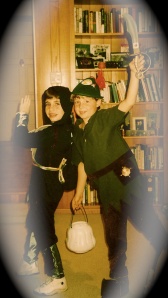 While Halloween traces its root to the Celtic harvest festival, which also was a “feast of the dead” where the dead came back to life to celebrate with the living, the notion of “carnival” (which Halloween very typically is) links to “carne” or meat (as in carnivore).
While Halloween traces its root to the Celtic harvest festival, which also was a “feast of the dead” where the dead came back to life to celebrate with the living, the notion of “carnival” (which Halloween very typically is) links to “carne” or meat (as in carnivore).
One of the functions of carnival in medieval society was to let the peasants blow off steam, and thus bolster the hierarchical structure of a church and nobles dominated culture. An echo of this is to be seen in slave days where slaves were, on limited occasion, given alcohol and a day to get drunk. In the middle ages, the priests might ride through the town in a wagon, tossing sausages to the crowd. While masquerade themes might bring to mind “An American In Paris” or Venetian balls in grand palaces, the roots of it are more Dionysian—a chance for anyone and everyone to get inebriated and run off into the forest to hook up with anyone and everyone.
Around 400 the church kicked off a celebration for martyrs, but by 800 it had gotten crowded in the pantheon and it was decided to have an “All Saints” day, with a chapel built in St. Peter’s. By 837 it was “open to the public,” (before it was invitation only), and so the idea of all saints (known, unknown and forgotten) open to all people is the sort of thing that fits with Privilege of Parenting’s ethic to respect all ideas and traditions—in honor of all our collective children.
All Saints Day was set for November 1st, and so on this November 1st of 2009, let’s give a nod to all “saints” (perhaps re-thinking the concept of saint as an archetype, like the hero, shadow, anima and animus; not something to be, but something to be conscious of)—honoring the saint within each of us, within our children, and most notably between us all whenever we rise to Buddha Wisdom, Christ consciousness, Rumi’s poetry and Martin Buber’s “essential deed” of relating to the sacred, free of fear and desire.
Namaste, Bruce


